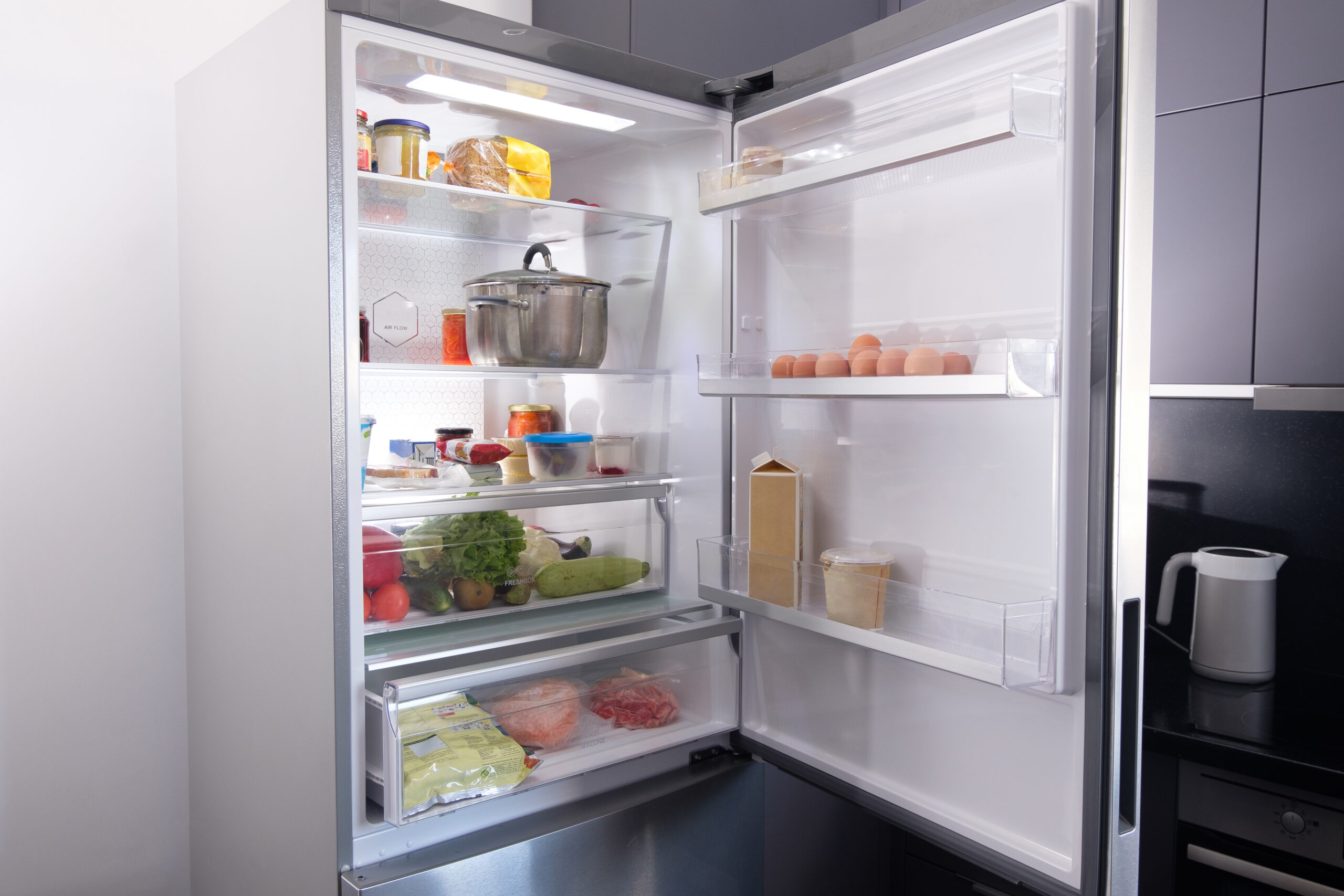Buying in bulk can be a game-changer for savvy shoppers looking to save money and time. Whether you’re stocking up for a large family or just want to minimize grocery trips, mastering the art of bulk buying can lead to significant savings. However, it’s not as simple as buying everything in large quantities. To really make bulk buying work for you, there are some insider secrets you should know. Let’s dive into these 13 secrets to master the art of bulk buying and save big.
1. Know What And When To Bulk Buy

Understanding when to buy in bulk can make a significant difference in your savings. Not everything is cheaper when purchased in larger quantities, and some items may go to waste if they aren’t used quickly enough. According to Consumer Reports, non-perishable goods like toilet paper, cleaning supplies, and canned foods are great candidates for bulk buying. However, it’s equally important to recognize items that may not be as beneficial, such as perishables or items that are only needed occasionally.
When you’re planning to buy in bulk, consider the shelf life of the products and how frequently you use them. For instance, if you enjoy a particular cereal every morning, buying in bulk makes sense. Conversely, if you only need a spice once in a blue moon, it could end up as clutter. Always assess your consumption patterns and storage capabilities before making bulk purchases to ensure it saves you money rather than costing more in wasted goods.
2. Merchandise Like A Master

Once you start buying in bulk, you’ll quickly realize that storage becomes a crucial factor. Not having enough space or storing items improperly can lead to spoilage and waste. Consider investing in storage solutions such as airtight containers for dry goods or vacuum sealers for frozen items. According to The Spruce, keeping a well-organized pantry can not only preserve freshness but also help you keep track of inventory, preventing over-purchasing.
Ensure that your storage spaces are dry, cool, and dark, as these conditions help maintain the integrity of the products. For bulk meats and other perishables, a chest freezer could be a worthwhile investment. By maximizing your storage efficiency, you can ensure that bulk buying remains a cost-effective strategy. Remember that the goal is not just to store but to maintain the quality of the goods you’ve bought.
3. Make a List And Check It Twice

Impulse buying is one of the most common pitfalls when shopping, and the stakes are even higher when buying in bulk. Creating a detailed shopping list can help you stay focused and avoid purchasing unnecessary items. According to Amenify, a well-thought-out list helps you keep track of what you actually need and ensures that you’re maximizing your storage space efficiently. It’s a simple step that can lead to substantial savings over time.
Before heading out, take stock of what you already have and identify what you actually need. Regularly revisiting your list not only keeps your bulk purchases intentional but also helps prevent the all-too-common issue of clutter. Moreover, checking your list twice ensures that you’re not missing out on essential items or doubling down on things you already have plenty of. Lists are your best friend in making bulk buying a strategic and successful endeavor.
4. Calculate Cost Per Unit

When shopping in bulk, it’s crucial to calculate the cost per unit to truly understand if you’re getting a deal. Just because something is packaged in a larger quantity doesn’t automatically mean it’s cheaper. To do this, divide the total price by the number of units (like ounces or pounds) to see if it’s actually a better buy than smaller packages. Sometimes, promotional sales on smaller packages can be more economical.
Always compare these calculations not only across packaging sizes but also across different brands. Brand loyalty can sometimes blindside you into paying more than necessary. By making cost per unit a habit, you can ensure that each purchase is the best deal possible. It’s one of the simplest yet most effective ways to make your bulk-buying smart and sustainable.
5. Buy What Your Household Uses Most

Stick to buying in bulk for the items that your household uses frequently. This sounds simple, but it’s easy to get sidetracked by bulk deals on items you rarely touch. Evaluate what products vanish quickly in your home and focus your bulk-buying efforts there. For instance, if snacks and beverages are always in high demand, that’s where you should concentrate your purchasing power.
Conversely, avoid the temptation to bulk-buy items that are used sparingly. Specialty items or luxury goods that aren’t part of your regular routine can end up consuming valuable storage space and budget. Be realistic about your household’s consumption habits. By aligning your bulk purchases with your actual usage, you’ll achieve maximum savings without unnecessary clutter.
6. Take Advantage of Memberships

Membership-based warehouses like Costco or Sam’s Club are tailored for bulk buying, offering products at discounted prices. Consider investing in a membership if you haven’t already; the savings can easily outweigh the annual fee if you shop there regularly. These stores often provide exclusive deals and discounts that aren’t available elsewhere, making them a great resource for bulk buyers.
However, be mindful of how you use the membership to ensure it’s worth the cost. It’s easy to get carried away by the vast selection and deals, so stick to your shopping list to avoid overspending. Also, make sure to explore all the member benefits, such as discounts on gas or pharmacy items. Leveraging these additional perks can further increase the value of your membership.
7. Embrace the Power of Freezing

Freezing is a fantastic way to extend the life of many products and make bulk buys last longer. From fresh produce to meats and pre-cooked meals, freezing can maintain quality and freshness for months. Many people overlook the versatility of freezing, but it can be a game-changer in preventing food waste. Make sure you understand how to properly freeze different items to maintain their texture and flavor.
Labeling and dating your frozen items is a key step to keeping track of what you have, ensuring older items are used first. Invest in quality freezer bags or containers to minimize exposure to air, which can cause freezer burn. By maximizing the potential of your freezer, you’re effectively doubling or tripling the shelf life of your bulk purchases. This not only saves money but also provides the convenience of having ingredients on hand whenever you need them.
8. Share with Family or Friends

One approach to making bulk buying more manageable is to share purchases with family or friends. This can significantly reduce costs and prevent wastage, especially for items that come in very large quantities. Organize a bulk-buying club where each member contributes to the purchase and takes a share of the goods. This way, you’ll enjoy the benefits of bulk buying without the burden of storage or spoilage.
Sharing also allows you to diversify the items you buy, trying new products without the commitment of a large quantity. It can be a fun, communal way to approach shopping and save money together. Just ensure that everyone shares similar expectations and needs to prevent any discrepancies. By pooling resources, you can unlock even more savings and make bulk buying a more sustainable option.
9. Be Wary of “Buy One, Get One” Deals

“Buy One, Get One” deals can seem appealing but aren’t always the best choice for bulk buyers. Often, these deals encourage you to purchase items you don’t really need. Carefully evaluate whether the second item is truly necessary or if it’s just an impulse buy. If it’s something you regularly use, it might be a worthwhile investment; otherwise, it can lead to clutter and waste.
These deals also often disguise higher prices, offsetting the perceived savings. Always calculate the cost per unit to ensure you’re genuinely getting a bargain. Be especially mindful of perishables in these offers, as the second item might expire before you have the chance to use it. Staying critical of such promotions ensures that your bulk-buying strategy remains efficient and budget-friendly.
10. Keep an Eye on Expiry Dates

Checking expiry dates is a must when buying in bulk, as purchasing large quantities of short-lived items can lead to waste. Be particularly diligent with perishable goods, as they tend to have shorter shelf lives. While non-perishables are a safer bet, it’s still wise to check dates, as they can vary greatly even within the same product category. Plan your meals around these dates to ensure nothing goes to waste.
Organizing your pantry or storage area by expiry date can help you use items in a timely manner. Place newer items at the back and older items in front to rotate stock effectively. This simple organizational trick can prevent the all-too-common issue of discovering expired goods long after purchase. By keeping an eagle eye on expiry dates, you’re not just saving money but also reducing food waste significantly.
11. Be Flexible with Brands

If you’re committed to saving money on bulk purchases, you may need to be flexible with brands. Often, store brands offer similar quality to name brands at a fraction of the price. Blind taste tests have shown that many people can’t tell the difference between generic and branded products. Trying different brands can lead to surprising discoveries and significant savings.
Being brand-flexible allows you to take advantage of sales and discounts that wouldn’t be available if you stuck to just one brand. It opens the door to experimenting with new products, some of which may become new favorites. Don’t let brand loyalty cloud your judgment when it comes to bulk buying. Flexibility is key to maximizing the financial benefits of stocking up.
12. Think Beyond Food

While bulk buying is often associated with food, don’t overlook non-food items that can be just as cost-effective. Products like toiletries, paper goods, and cleaning supplies are excellent candidates for bulk purchases. These items don’t spoil and are used regularly, making them a smart choice for those looking to cut costs. Buying these in bulk can reduce the frequency of shopping trips, saving both time and money.
Assess your household needs beyond the kitchen to identify other potential savings. Keep an inventory to ensure that you aren’t overstocking, which can tie up funds unnecessarily. By thinking beyond food, you open up a wider range of opportunities to make the most of bulk buying. This holistic approach can lead to even greater efficiencies in your household budget.
13. Shop with Seasonal Sales

Seasonal sales can be a prime opportunity for scoring bulk deals, as many retailers discount items to make room for new stock. Holidays and the end of seasons often bring about significant price reductions. Plan your bulk buying around these times to capitalize on the best prices. For example, post-holiday sales can be a great time to stock up on non-perishable festive goods.
Being aware of sales cycles can help you strategize your bulk buying plan for maximum savings. Sign up for newsletters or download shopping apps that alert you to upcoming sales events. This proactive approach ensures that you’re always ready to take advantage of the best deals available. Shopping seasonally not only saves money but also keeps your bulk purchase list dynamic and varied.
This article is for informational purposes only and should not be construed as financial advice. Consult a financial professional before making investment or other financial decisions. The author and publisher make no warranties of any kind.








